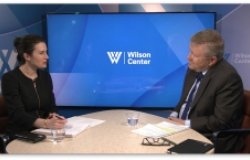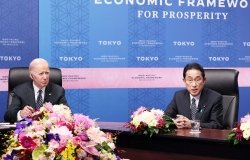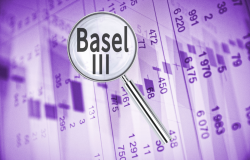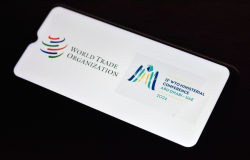Instituciones, Impuestos, y Desigualdad en Guatemala
This paper (available for download below) is part of a series of publications from an event the Latin American Program hosted in December 11, 2012.
Institutions, Taxes, and Inequality in Guatemala
EXECUTIVE SUMMARY
Guatemala continues to have one of the lowest levels of taxation in Latin America, despite the series of tax reforms attempted by successive governments since the end of the country’s civil war. Unlike some other countries with low tax collection, Guatemala does not have valuable natural resources or state-owned enterprises to make up the tax short-fall. With high rates of poverty and one of the most unequal societies in the region, effective taxation is crucial for the Guatemalan government to expand its resources for social programs and other public spending. Unfortunately, the economic elite have benefited from a weak government and have successfully used state institutions to prevent progressive reforms. In their paper, Maynor Cabrera and Aaron Schneider argue that taxation is a clear indicator of state capacity, and Guatemala’s challenges collecting tax revenue point to the country’s institutional and structural weaknesses.
The Peace Accords negotiated in 1996 at the end of the civil war stated that the country’s tax collection should reach 12 percent of GDP by 2000; despite efforts under each government since then, the reforms have largely failed due to social, political, and institutional obstacles. Wealth is concentrated in the hands of a small economic elite, which is too fragmented for cohesive action but shares enough common business and political interests to effectively veto most progressive tax reform attempts. Guatemala’s legislature is characterized by fragmented and volatile political parties which often function as little more than personal vehicles for candidates and discouraging universalism necessary for progressive reform. The Constitutional Court has power to limit tax reforms and has been used by the economic elite and special interests to block many reforms in the post-war period.
Immediately after the Peace Accords, the government of Álvaro Arzú increased indirect taxes through the value-added tax (VAT) and slightly decreased direct taxes (income tax), also taking in increased revenue from customs duties. During this period, reforms were unfortunately limited by the opposition and by a lack of will in the government to spend too much political capital on the issue. In an effort to build on the consensus-based negotiations begun during the Peace Accords, reformers created the Pacto Fiscal in 2000. The pact designed an increase in the VAT to 12%, an increase of the maximum income tax rate, and an increase of the minimum tax rate for businesses’ gross sales and net assets. Although the pact engaged with civil society, it failed to adequately involve political parties and had fallen apart by 2003 without achieving a lasting reform. During the GANA (La Gran Alianza Nacional) coalition government from 2004 to 2007, reformers tried to repair the damage done to the taxation system by the Constitutional Court in the years before – the tax on business sales and assets had been declared unconstitutional and the income tax rates had been lowered. In 2006, GANA succeeded with a tax administration strengthening act to combat evasion and improve related regulations. Reform attempts under the next government, led by Álvaro Colom, failed after the loss of legislative support due to scandals, the financial crisis, and consequences of a heavily fragmented party system. From 2004 to 2012, overall tax revenues continued to fluctuate and the system became slightly more regressive with increased reliance on VAT.
The most substantial taxation reform to date in Guatemala occurred in 2012, in the early days of the Otto Pérez Molina government. Pérez Molina was able to build on tax reform proposals attempted by previous administrations and his connections with the private sector to achieve a fairly comprehensive reform. These reforms included two new tax laws (a new anti-evasion law and a tax update law); reforms to the VAT and income tax (introducing a dual system to reduce evasion of taxes on capital income); a new vehicle tax (which replaced an import tariff with a first-registration tax on vehicles); and a reduced number of brackets, with lower rates, on income from salaried work. Despite the marked improvements under the 2012 tax reform, overall tax collection in Guatemala is still very low and the reforms are projected to reduce the Gini coefficient by only 0.006.
Since 1996, direct (VAT) and indirect (income) tax rates in Guatemala have increased while customs tariffs and special taxes have decreased, bringing the total tax collection as a proportion of GDP from 8.8 to 11 percent (in 2012), still below the goal set out in the Peace Accords. The country’s old tax system (in 1995) was slightly progressive, but changes from the Peace Accords to 2006 created a slightly regressive system led by increases to the VAT and a VAT credit on income taxes, which favors higher earners. The 2012 tax reform process is still being implemented (through 2014), but Cabrera and Schneider look at its emerging and potential effects on Guatemala. They see the changes to the income tax as potentially favorable for salaried workers, but likely to have minimal impact when combined with other elements of the reform. Changes in the income tax structure for non-salary income will increase revenue in a progressive way, but the authors suggest that the size of the income-tax credit for VAT payments will reduce both revenue and progressivity.
Guatemala’s experience with tax reform offers broader lessons about the relationship between the economic elite, political system, and state capacity, and how these properties are reflected in tax structure. A fragmented economic elite may lack the cohesion to mount a counter-reform, but in the face of a weak political system it can still hold veto power through institutions like the Constitutional Court. The country’s fragmented and volatile party system with its heavy reliance on coalitions creates many opportunities for anti-reformists to block or dilute new laws. After nearly two decades of ineffective, temporary, and diluted tax reforms, Pérez Molina’s administration finally achieved an integrated reform. He was able to build consensus by basing his reform on those put forward by other parties and to leverage the support of the economic elite he had courted during the election. Nevertheless, the most recent reforms still show the limits of Guatemalan political system and its capacity to create a common vision for the country. These limits are evident in the many institutional opportunities to hinder the transformation of the tax system, the government’s problems implementing customs reforms, a lack of unity among political elite, and the continued ability of interest groups to promote their agendas via the Constitutional Court.
About the Authors

Latin America Program
The Wilson Center’s prestigious Latin America Program provides non-partisan expertise to a broad community of decision makers in the United States and Latin America on critical policy issues facing the Hemisphere. The Program provides insightful and actionable research for policymakers, private sector leaders, journalists, and public intellectuals in the United States and Latin America. To bridge the gap between scholarship and policy action, it fosters new inquiry, sponsors high-level public and private meetings among multiple stakeholders, and explores policy options to improve outcomes for citizens throughout the Americas. Drawing on the Wilson Center’s strength as the nation’s key non-partisan policy forum, the Program serves as a trusted source of analysis and a vital point of contact between the worlds of scholarship and action. Read more










